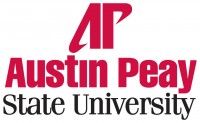 Clarksville, TN – Austin Peay State University has gained national attention in the higher education circle with the launch of its new Course Recommendation System, which helps to pair a student with courses that best fit his/her talents and program of study.
Clarksville, TN – Austin Peay State University has gained national attention in the higher education circle with the launch of its new Course Recommendation System, which helps to pair a student with courses that best fit his/her talents and program of study.
The Chronicle of Higher Education, a Washington, D.C.-based weekly publication of news and information for college and university faculty members and administrators, featured APSU’s new tool in its April 10th, 2011 issue. The article is titled “The Netflix Effect: When Software Suggests Students’ Courses.”
APSU’s Course Recommendation System operates in the same fashion as Amazon or Netflix. Companies such as these suggest movies or books based on previous customer choices, reviews and/or purchase history.
The new system at APSU is part of the University’s commitment to student success.
“The system combines hundreds of thousands of past students’ grades with a particular student’s transcript to make individualized course recommendations,” said Dr. Tristan Denley, provost and vice president of academic affairs. “These are recommendations that apply directly to the student’s program of study. The strongest recommendations are those courses which are necessary for a student to graduate, and which the system predicts the student will be most successful in academically.”
The system also provides information to faculty. This information is designed for use as a tool in academic advising, meant to supplement the advice faculty members provide to their advisees as they progress through their degree.
The idea for the project was sparked, in part, by the goals set by APSU President Tim Hall, focusing on student retention and success.
Denley, who has a Ph.D. in mathematics, coined the concept last summer and created the underlying mathematics and algorithms. Having created a preliminary model, he began working with Robb Betts, Mark Jarrell, John Lander and Anna Murray – all from the University’s Office of Information Technology – last fall to code and implement the tool, turning it into a functional Web system.
“We are very excited to be able to make this unique feature available to our students,” Denley said.


